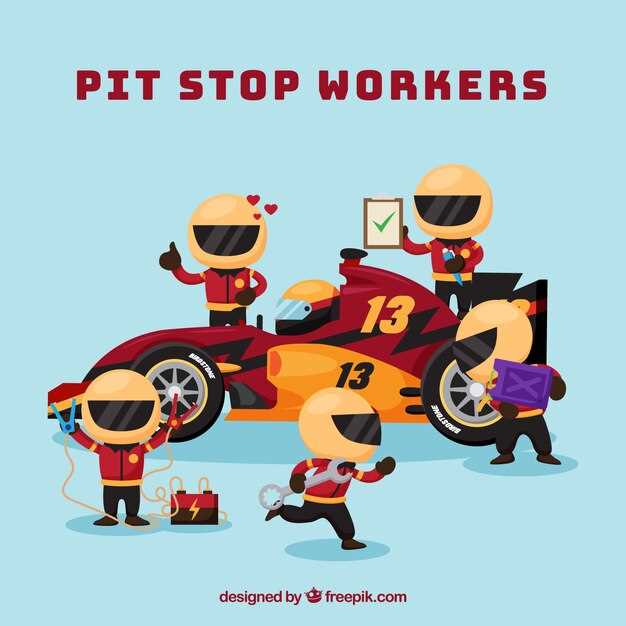How VW Teams Coordinate During a Race

Effective coordination within a race team is essential for achieving success on the track. The strategy of a racing team not only determines how well they perform but also impacts the overall efficiency of their operations. Successful teams analyze their tactics and continuously adapt them to meet the challenges posed by competitors and varying racing conditions.
A well-coordinated team ensures that every member, from drivers to engineers, is aligned with the overarching goals. Each race presents unique challenges, and the ability to pivot and modify existing strategies can be the deciding factor between victory and defeat. The seamless integration of communication and teamwork plays a pivotal role in executing plans effectively during high-pressure situations.
Moreover, understanding the nuances of each race allows teams to develop specialized tactics that enhance their performance. This involves not only refining the technical aspects of the vehicles but also optimizing pit stop strategies and real-time decision-making processes. In this article, we will delve into the various coordination strategies employed by VW Race Teams, examining how they secure competitive advantages through meticulous planning and teamwork.
Real-Time Communication Protocols for Race Day

Effective communication is crucial for a racing team’s success, particularly on race day when every second counts. Real-time communication protocols facilitate the quick exchange of vital information, enabling teams to adapt their strategies in response to changing conditions on the track.
Utilizing protocols such as VHF radios and cellular networks, teams can maintain constant connection between drivers, pit crews, and strategists. The immediate availability of data, such as lap times and vehicle performance metrics, allows teams to make informed decisions rapidly. This level of coordination enhances the team’s overall strategy, ensuring that all members are aligned with real-time developments.
Additionally, implementing communication apps specifically designed for racing can streamline information sharing. Features like group chats and instant notifications allow team members to relay urgent updates promptly, ensuring that everyone stays informed about critical adjustments or tactical shifts required during the race.
Moreover, integrating live telemetry systems provides an edge by allowing engineers and strategists to monitor the vehicle’s performance in real-time. This data translates into actionable insights, which can be communicated back to the driver instantly, enabling a proactive approach to race strategy.
In conclusion, real-time communication protocols are essential for optimizing a racing team’s performance on race day. By enhancing the speed and clarity of communication, teams can execute their strategies effectively, respond to challenges dynamically, and ultimately enhance their chances of success on the track.
Data Analysis Techniques for Strategic Decision Making
In the highly competitive environment of motorsports, effective data analysis is essential for optimizing the performance of the VW Race Team. The integration of data analysis techniques into the strategic framework enhances decision-making processes, allowing for precise adjustments to race tactics and overall strategy.
One crucial technique is predictive analytics, which employs historical data to forecast future performance outcomes. By analyzing past race results, vehicle telemetry, and driver behavior, teams can identify patterns that inform race strategies. For instance, understanding the impact of tire wear over various track conditions assists in determining optimal pit stop timing, significantly affecting overall race effectiveness.
Descriptive analytics also plays a vital role by providing insights into current performance metrics. This technique involves summarizing historical data to monitor real-time race dynamics, such as lap times, fuel consumption, and acceleration profiles. These insights allow teams to adjust their tactics mid-race, tailoring their approach to changing conditions and competitor strategies.
Data visualization tools are integral to communicating complex analytics effectively among team members. By utilizing dashboards and graphical representations, teams can quickly interpret performance metrics, which enables faster and more informed decision-making during races. Visualizations can highlight areas for improvement and assess the effectiveness of various tactics implemented throughout the event.
Moreover, simulation modeling enables teams to test different scenarios before actual races. By simulating race conditions, such as weather changes and competitor strategies, teams can evaluate the potential success of various strategies and prepare contingency plans. This forward-thinking approach supports the creation of adaptive tactics that can respond to unforeseen race developments.
Lastly, integrating machine learning algorithms enhances both predictive and descriptive analytics by uncovering complex relationships within data that might be unnoticed by traditional methods. These algorithms can learn from vast datasets, continuously improving predictions about race outcomes and providing deeper insights into optimizing vehicle performance.
Utilizing these data analysis techniques not only strengthens the VW Race Team’s strategic decision-making but also positions them favorably in the competitive racing landscape. By focusing on data-driven strategies and adaptive tactics, the team is equipped to enhance their performance and achieve racing excellence.
Role Assignment and Task Prioritization in Team Dynamics

The effective coordination of the VW Race Team relies heavily on clear role assignment and strategic task prioritization. These elements are critical for ensuring that each team member contributes to the overarching objectives while maintaining efficiency.
Proper role assignment begins with understanding individual strengths and expertise. This knowledge allows the team to leverage the unique skills of its members, enhancing overall performance. The following steps outline effective tactics in role assignment:
- Assessment of Skills: Conducting a thorough analysis of each team member’s capabilities and past experiences.
- Defining Responsibilities: Clearly outlining the specific duties associated with each role to minimize overlap and confusion.
- Flexibility in Roles: Allowing for role adjustments based on project needs or member performance to enhance adaptability within the team.
Once roles are established, task prioritization becomes imperative. A well-structured strategy ensures that the team focuses on activities that provide the most significant return on investment regarding time and resources. Key tactics for prioritizing tasks include:
- Immediate Impact: Identifying tasks that will have the most immediate effect on performance or outcomes and prioritizing them.
- Long-term Goals: Balancing short-term needs with tasks that contribute to the team’s long-term vision, ensuring sustained progress.
- Risk Assessment: Evaluating the risks associated with each task and prioritizing those that pose the highest threat to team success.
By employing these tactics for role assignment and task prioritization, the VW Race Team can enhance its operational effectiveness and foster a collaborative atmosphere. Each member remains focused on their objectives, resulting in a cohesive unit capable of achieving excellence on the race track.



